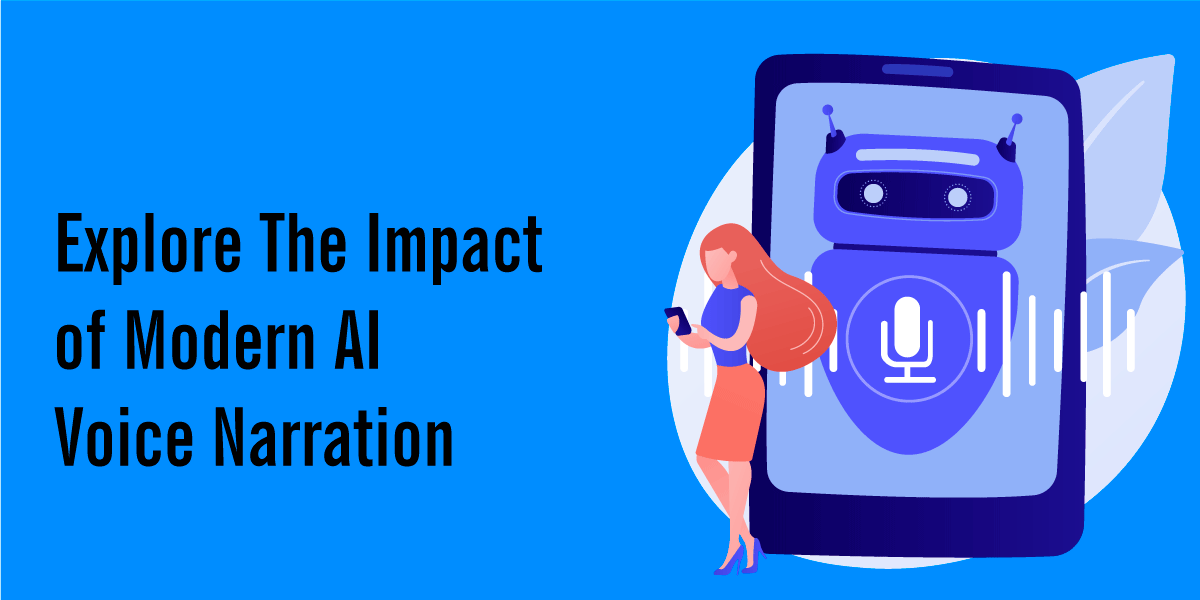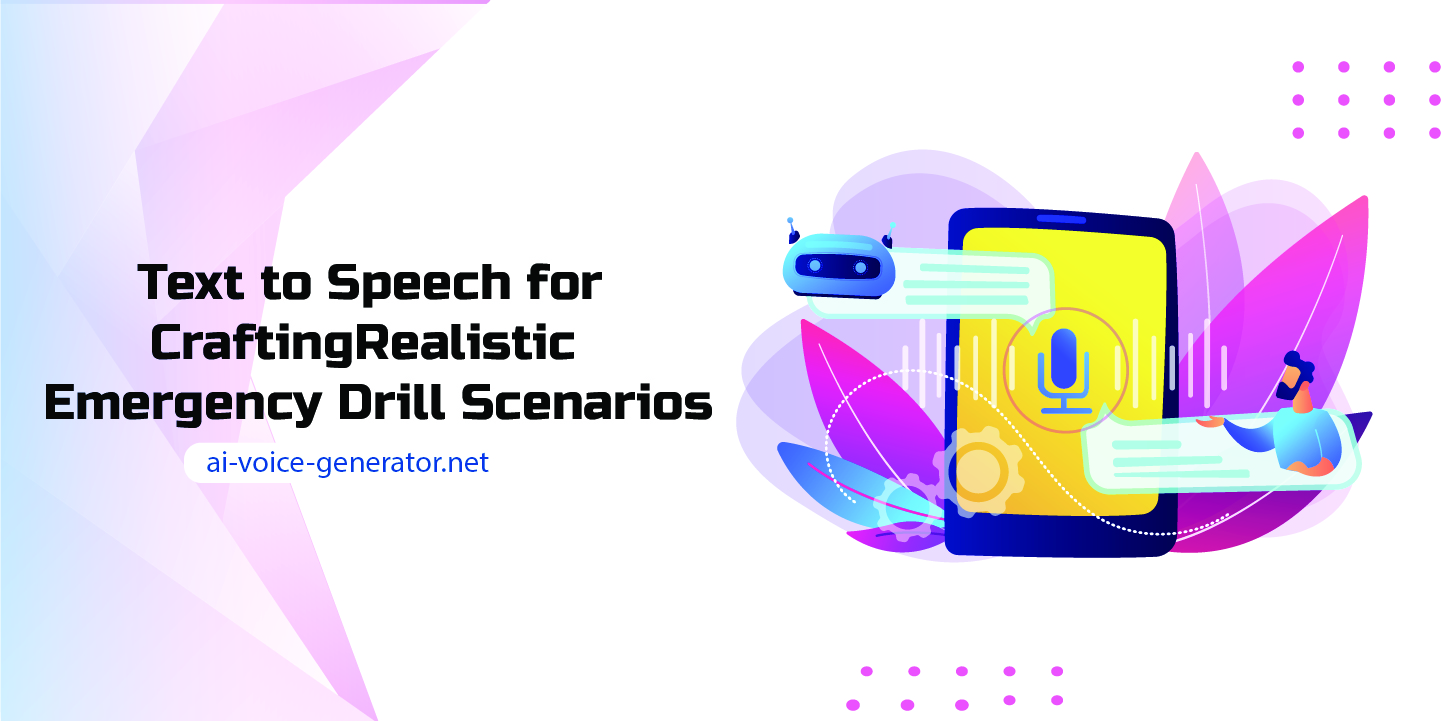
AI Voice Generator Trends in 2025: Emotional Intelligence, Ethics, and Industry Disruption
In 2025, the evolution of voice technology is moving at an unprecedented pace, revolutionizing industries that rely on human-like audio communication. At the heart of this transformation lies the AI voice generator, a tool that has quickly transitioned from novelty to necessity across education, entertainment, and customer service sectors.
As technology deepens its hold on our auditory experiences, there is a pressing need to understand the human, ethical, and technological implications surrounding these tools. This blog explores the latest shifts shaping AI voice technology in 2025—from emotionally intelligent speech synthesis to ethical debates and future disruptions—offering a timely snapshot of where the world of digital voice is heading.
Emotional AI Voices: The New Standard in Voice Technology
When artificial intelligence first entered the world of voice, it struggled to convey emotions convincingly. In 2025, emotional AI voices have changed that narrative dramatically. Today’s systems can simulate a wide range of emotions—joy, sadness, urgency, or calm—with a level of nuance that often surprises listeners. This new capability is not just a technical milestone; it fundamentally alters how users engage with voice-enabled products.
By integrating contextual awareness, these voices can respond differently to a child seeking help versus a stressed-out commuter asking for directions. The result is a more engaging and human-like experience, leading to increased trust and satisfaction. Behind the scenes, this leap forward is made possible by advances in synthetic speech technology, which now uses neural networks to mimic tone, pitch, rhythm, and even breathing patterns.
Ethics of AI Voice: The Human Cost and Digital Integrity
As AI-generated voices become more realistic, they blur the line between human and machine, sparking debates about AI voice ethics. While many celebrate the efficiency and scalability of machine-generated voiceovers, voice actors are voicing concerns about the erosion of their industry.
Moreover, questions about consent and voice ownership have taken center stage. Should individuals have the right to prevent their voice from being cloned? What happens when a voice is used in misleading or harmful contexts? These ethical dilemmas highlight the need for better regulation and transparency in the development of AI voiceover tools, ensuring that creators and consumers alike are protected.
From Monotone to Masterpiece: The Rise of Text-to-Speech AI
The days of robotic narration are long gone, thanks to the sophistication of text-to-speech AI. This branch of artificial intelligence has matured into a powerful medium capable of producing voiceovers for audiobooks, virtual assistants, and accessibility tools.
Its importance goes beyond entertainment. In educational contexts, students with visual or reading impairments now rely on these tools daily. As voice models become more expressive, learners are more engaged, and retention rates improve. The emotional range embedded within these synthetic voices also helps in sensitive training modules, such as mental health awareness or conflict resolution simulations.
Cloning the Human Voice: Technology’s Double-Edged Sword
Among the most fascinating and controversial developments in 2025 is AI voice cloning. With just a few seconds of audio, advanced algorithms can replicate a person’s voice, complete with their unique inflections and speech patterns.
This technology holds incredible promise in areas such as film production, where recreating a deceased actor’s voice can preserve continuity, or in healthcare, where patients can still hear the voice of a loved one despite physical distance. However, the risks are equally enormous. Deepfake audio scams have already surfaced, manipulating cloned voices to commit fraud or spread disinformation. The line between creativity and criminality is thinner than ever.
Best AI Voice Generators 2025: Features That Set the Bar
As competition intensifies, distinguishing between tools becomes critical. The best AI voice generators 2025 don’t just replicate speech; they deliver a dynamic, context-aware auditory experience. These tools often support multi-language capabilities, real-time voice adaptation, and seamless integration with other AI systems.
Users are increasingly looking for platforms that offer customization, data privacy, and ethical safeguards. The demand for AI voices that are both authentic and responsibly developed reflects a maturing market that no longer tolerates mediocrity or moral gray areas. For a hands-on experience with one such solution, explore this advanced AI voice generator that brings top-tier features to creators and enterprises alike.
Industry Disruption: How AI Voice Is Reshaping Audio Content
The broadcast and media landscape is undergoing a seismic shift due to the proliferation of AI voice applications. Audiobook publishers like Audible are already using AI to produce full-length narrations, reducing production costs and accelerating release timelines.
Similarly, the gaming industry has embraced voice AI to provide dynamic dialogue that adapts to player choices, resulting in more immersive experiences. Even small businesses are using AI-generated IVR systems and explainer videos to connect with audiences more professionally. With efficiency gains and broader creative possibilities, it’s clear that synthetic voice is more than just a tool—it’s a catalyst for a new audio economy.
The Future of Voice AI: What Comes Next?
Looking ahead, the future of voice AI is likely to revolve around hyper-personalization. Systems will learn from users’ tone and preferences, evolving to offer real-time emotional responsiveness and context-driven speech. As AI grows smarter, it will not only react but also anticipate needs, suggesting phrases, adjusting mood, and even choosing language levels based on the listener.
This trajectory also involves greater synergy with other technologies. Expect voice AI to work hand-in-hand with augmented reality, biometric authentication, and emotion-tracking wearables. The human voice is becoming a digital interface, one that is rich, expressive, and intelligently aware.
Why Human-Like AI Voices Matter in Mental Health and Therapy
Mental health professionals are beginning to adopt emotionally intelligent synthetic voices in therapy apps and chatbot interfaces. The ability to simulate empathy through emotional AI voices provides a bridge between clinical advice and human warmth. This approach lowers barriers for individuals who may feel stigmatized by traditional therapy or who lack access to professionals.
With emotionally resonant voices, users are more likely to engage honestly and consistently with mental health tools. This innovation represents not just a technological achievement, but a social one—enabling support systems that feel compassionate, even when they’re digital.
Accessibility and Inclusion: A Quiet Revolution Through AI Voice
The reach of text-to-speech AI extends far beyond convenience; it’s a cornerstone of accessibility in the digital age. Individuals with reading disabilities, such as dyslexia, or mobility impairments that hinder typing and communication, rely on these voices daily.
Modern AI voices provide more than just functionality—they offer dignity. A person’s ability to consume information or express themselves without drawing attention or facing obstacles levels the playing field. As these tools become more advanced and emotionally aware, they will play an even more vital role in building inclusive digital environments.
Regulation, Transparency, and the Need for Global AI Voice Ethics
As with all transformative technologies, the lack of clear regulation around AI voice ethics poses serious risks. Unregulated use of cloned voices, biased training data, and unclear ownership rights are becoming increasingly problematic.
Governments and tech leaders are beginning to recognize the need for ethical frameworks. Initiatives are emerging that require consent before voice cloning and transparency around whether a voice is human or AI-generated. These conversations are essential, especially as tools become harder to distinguish from real people.
Synthetic Speech Technology in E-Commerce and Customer Service
The deployment of synthetic speech technology in e-commerce has enhanced customer experiences, particularly in voice-assisted shopping, order tracking, and product tutorials. Unlike earlier versions that sounded mechanical, today’s AI voices can reflect brand personality and adjust tone for different customer types.
This dynamic personalization leads to higher customer satisfaction and stronger brand loyalty. In support centers, AI voice systems reduce wait times while maintaining conversational flow that feels human. As the technology continues to evolve, expect voice AI to become a cornerstone of every successful online business.
Exploring the Crossroads of AI Voice Applications and Education
From language learning platforms to interactive history lessons, AI voice applications are redefining classroom experiences. Teachers now use synthetic voices to read literature, explain concepts, and even simulate historical speeches.
Students benefit from varied accents, tones, and styles that help contextualize content and make abstract ideas tangible. For institutions, the affordability and scalability of voice AI mean broader reach without compromising quality. The synergy between voice AI and education is not a trend; it’s a paradigm shift.
How AI Voice Generators Are Empowering Independent Creators
For content creators, especially those without access to studios or voice talent, AI voiceover tools offer unmatched versatility. Whether you’re a YouTuber, indie game developer, or podcaster, these tools let you experiment, iterate, and publish quickly.
With the rise of platforms supporting these technologies, small voices are getting big-stage opportunities. Many creators are using these tools not just as a supplement, but as a primary component of their storytelling arsenal.
The Cultural Shift Toward AI Narratives and Audio Identity
As AI voice cloning becomes more commonplace, we are entering an era where voice is part of digital identity. Influencers, brands, and even ordinary users are beginning to curate how they sound online, just as they once curated photos or bios.
This marks a cultural transition where audio becomes a key element of personal branding. And as these voices persist across platforms, they contribute to the evolving concept of digital immortality—a version of oneself that speaks, lives, and resonates even when offline.
FAQs
AI voice generators convert text into human-like speech for various uses, including content creation, customer support, and virtual assistants.
Not entirely, but they are increasingly used for cost-effective and quick projects, raising concerns within the voice acting industry.
They use deep learning to analyze tone, pitch, and context, enabling them to simulate human emotions realistically.
It depends on ethical use. Without regulation, cloned voices can be misused for impersonation or fraud.
Education, media, e-commerce, and mental health sectors are heavily impacted due to increased accessibility and engagement.
Top tools offer real-time adaptability, multilingual support, emotional depth, and data privacy features.
Advanced systems are designed to understand context and adjust tone accordingly, improving user interaction.
Expect more personalization, emotional responsiveness, and integration with other smart systems for seamless communication.

